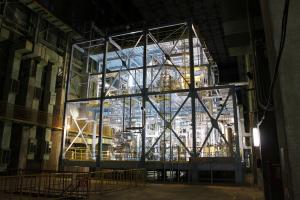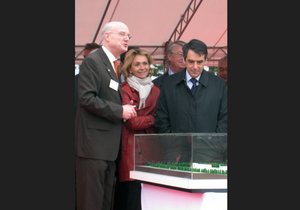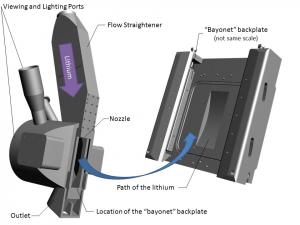Solving the material issue before post-ITER steady-state devices like DEMO or PROTO (1) enter operations is thus of utmost importance for the future of fusion. This will be the task of the International Fusion Materials Irradiation Facility (IFMIF) that will test and qualify advanced materials for use in future fusion power plants.
The project, which is presently in the Engineering Validation and Engineering Design Activities (EVEDA), is part of the
Broader Approach that Japan and the European Union formally launched in 2007. IFMIF is coordinated from Rokkasho, in northern Japan, and headed by Pascal Garin, formerly of CEA's Institute for Magnetic Fusion Research (IRFM) and Agence Iter France.
IFMIF-EVEDA is presently engaged in the validation activities of two very innovative technologies: an accelerator prototype that will produce high-energy deuterium nuclei and a test loop ("EVEDA Lithium Test Loop" or ELiTe) destined to check and validate all of the thermo-hydraulic characteristics of the system.
In the future IFMIF facility, whose location has not been decided yet, accelerator and lithium loop will be coupled to generate neutrons similar to those produced in a fusion reaction.
While the accelerator prototype is being manufactured in Europe and will be tested in Rokkasho, construction of the test lithium loop was completed in a record twelve months in December 2010 at the JAEA Oarai centre, near Naka.
ELiTe was designed by JAEA with contributions from the European Domestic Agency for ITER (F4E) and the Italian Agency for New Technologies, Energy and Sustainable Economic Development (ENEA). By the end of February, ownership of the installation will be transferred from the constructor Mitsubishi Heavy Industry to JAEA who financed it. As for operations, they could begin as early as June of this year.
ELiTe is fully representative of the future IFMIF lithium loop, with the exception of the target assembly width—reduced by a factor 2.6—and of the absence of a heat removal system as test operations will not involve nuclear interactions.




